Carroll County was created 23 December 1833 from the Choctaw Cession.
Its county seats are Carollton and Vaiden Mississippi. The county is named for Charles Carroll of Carrollton, the last surviving signatory of the U.S. Declaration of Independence.
County records are housed in Vaiden.
Carroll County is inside the Mississippi Delta, although most of its land is in the hill country.
Carroll County Maps
-
County Map of Mississippi highlighting Carroll County
-
Carroll County, Mississippi – county map
-
Early County Settlements of Carroll County, Mississippi
-
1842 Map of Carroll County, Mississippi
-
1839 Map of Carroll County, MS
-
1888 Map of Carroll County, Mississippi
-
1864 Map of Carroll County, MS
Extinct Towns and Villages
Extract taken from Publication of the Mississippi Historical Society, By the Mississippi Historical Society, Edited by Franklin L. Riley, Secretary, Volume V, Oxford, Mississippi, 1902, pgs 323-327, from chapter entitled “Extinct Towns and Villages of Mississippi” by Franklin L. Riley. You can read this at Google Books.
Leflore[1] – The village of Leflore was situated midway between Carrolton and Greenwood, being nine miles from each place. It was at the foot of the range of hills which runs a few miles east of Yalobusha river. The land upon which it was built belonged to Col. Greenwood Leflore. The first merchant of this place was probably Uriah Tison, who afterwards moved to Grenada. Leflore had several stores and one church. The village was a prosperous business point when the present city of Greenwood was known only as Williams’ Landing. Leflore dwindled and died late in the 30’s being superceded by Point Leflore, a village which sprang up in the present county of Leflore at a distance of only a few miles.
Only a few old wells and brick-kilns remain to mark the site of the old town. The place is now in cultivation.
Shongalo – The village of Shongalo was situated a short distance west of Vaiden. The place was incorporated by an act of the Legislature in 1840. The writer has failed to get more detailed information on this subject.
Middleton[2] – The old town of Middleton was situated two miles west of Winona. It had its beginning in a small log cabin in which Ireton C. Devane sold goods to the Indians and to the pioneers who by chance traveled along the .trails that crossed at that place. A public road was soon laid out – the first in Carroll county – from Carrollton to the county seat of Choctaw county, by way of Devane’s store. It was first called Oxford, then Bowling Green, and finally Middleton. The last name was derived from the fact that the place was half way between Carrollton and old Shongalo. The second business enterprise to be established there was known as the “big firm”, because of the unusually large number of its members. Messrs. Small and Davidson were managers of this firm. In the early history of the place Mike Hill and Alfred Drake also built a store there. The business enterprises of Old Middleton grew gradually until it had eight or ten stores. The principal merchants, besides those mentioned above, were Baker, Townsend, Jas. Bryant, Hemingway, W. H. Witty, J. J. Gee, and Alexander Ray.
After the treaty of Dancing Rabbit creek a large number of white families settled in and near this place. Among these were John Gray, with his sons, Marvel, West, and Allen, Warren Wadlingotn, the Herrings, Samuel Jenkins, William Barrow, W. Y. Clollins, John E. Palmer, The Townsend brothers, Geo. A Hogsett, John Huffman, Harrison Yelvington, N. McFatter, ___ Scrivner, ____ Graves, Gfather of the defaulting State Treasurer; Chas. Davis, ____ Joyner, ____ Campbell, ____ Reeves, James Jones, Andrew Woods, the Young brothers, James Pentecost, John and George McLean, W. W. and E. G. Whitehead, James Collins, Joseph Eubanks, ____ Goza, Harvey Merrett, ____ Webb, “Jack Turner”, Hugh and Louis Davis, John P. Thompson, Mary Baskin, Ned Inman, Mrs. Dubard, the Doyles, ____ Culpepper, John Tulord, the shoemaker, W H. Curtis, the tailor; ____Shamburger, Messrs. Gould and Carpenter, lawyers.
In 1834 Ephraim Walls was granted a license to keep a tavern and to sell vinous and spirituous liquor at Middleton. He was succeeded by a Mr. Newton, and he in turn by Mrs. Bridges, who dispensed with the saloon.
Mr. W. F. Hamilton, of Carrolton, Miss. writes as follows about the members of the Medical profession who lived in Middleton:
“Of the early physicians I mention Drs. Lipscomb, Montgomery, Liddell, Satterwhite, Dandridge, Holman, Gary, Ward, and Atkins. Dr. Montgomery left Middleton and located in St. Louis, where he spent his life in the work of his profession. Dr. Lipscomb married a Miss Scrivener, and after several years residence here removed to Texas. He had a partner, Dr. Satterwhite, in his early practice, but he remained at Middleton only a few years. Dr. W. W. Liddell came to Middleton from Georgia and took a high stand in the community as a physician and as a man. It was here that he married, and although he did not spend his life in this neighborhood, he did not leave the county. Dr Liddell was a man of great force of character and was a leader of men. Dr. Dandridge lived at Middleton during her days of splendor. Generous and jolly, he made many friends and was a conspicuous figure in the society of the town. Like many other young men, he took the “gold fever” in 1849 and removed to California. After roughing it in that western section, with varying successes for several years, he returned to Mississippi and settled in Panola county, where he died a few years ago. Dr. J. W. Holman began his career at Middleton and ended it a few years ago at Winona, within two miles of his first location. He was very frail physically, but had a fine mind, well stored with useful information, and by his culture and suavity of manner, made many friends. Dr. Allen W. Gary was born and reared and educated at Middleton and spent his life in the old neighborhood. Dr. H. B. Atkins came to Middleton a few years before the war from Choctaw county and continued in the practice until he enlisted in the Confederate army in 1861. When the call to arms was made in the South Dr. B. F. Ward had just fairly begun the practice of medicine at Middleton. He shouldered his musket and marched to the front with the first company from the county. As a soldier he was brave, earnest, and faithful; as a surgeon skilled, attentive, sober, and sympathetic. He presence and his services were there, as now, a benediction, indeed. He still lives to bless his people, to honor his State, to dignify and adorn his profession, and to serve wherever duty may call him.”
Middleton was well known for its educational advantages. The first school was taught by Miss Murtah. This school grew to be a female college. A large brick house was built and afterwards Dr. White assumed control of the institution. There are many noble women now living who can testify to the excellence of this extinct female college. While this institution was thus flourishing, the Baptists of the State decided to locate a male college at Middleton. A commodious brick building was erected and the male institution opened under propitious circumstance. A. S. Bailey was president and was assisted by Professors Morley and Pratt. Following these gentlemen were Professors Brown and MacWilliams. Prof. MacWilliams was highly esteemed throughout the whole section, and when Montgomery county had been in existence some time the people elected him as County Superintendent of Education.
Notwithstanding the fact that two colleges had been located at Middleton when a commission was appointed in 1841 to locate the State University, that town in common with several other places entered the contest for the location of the institution. We are informed by a gentleman who was a citizen of the place at the time, that the commission expressed publicly an intention of selecting it as the seat of the university, but the two schools at Middleton fought the project so bitterly that the commission thought it best to locate the University at its present site.
There was three churches at Middleton, – Presbyterian, Baptist and Methodist. Rev. A. Newton and Rev. ____ Holly were pastors of the Presbyterian church. Such men as Morris, Latimer, Echols, and later Henry Pittman, held the pastorate of the Baptist church. Rev. James Waldon, presiding Elder of the Methodist church, resided at Middleton. Of the preachers of that day many interesting incidents are related. Nathan and Joseph Morris were prominent in the Baptist church. We are told that there was no missionary branch of the Baptist church in this section at an early date, all members of the Baptist faith were “Hardshells” or Primitive. When the division of the church came these brothers divided also, Nathan clinging to the “Hardshell” wing, and Joseph organizing the “Missionaries”. He was followed by Stovall, who was familiarly known as “old ship of Zion”, because of his great partiality for that grand old hymn.
A Mr. Brown was the first Campbellite or Christian preacher in this part of the State, though his denomination had no place of worship in Middleton. He was succeeded by John H. Manire and B. F. Manire.
In these early days there was a debate between Latimer, of the Baptist church, and Newton, of the Presbyterian church. All classes of the people became very much excited over this controversy, and both churches received such a backset that they did not recover from it for many years.
Middleton was often visited by the political leaders of the Sate. Prentiss and Foote met each other there in political debate. Col. McClung, the great duelist, often went there. An interesting story is told of McClung and Nelson. They were once sleeping together in the hotel at Middleton, and were awakened by a terrifying noise as of something falling down the chimney. McClung sprang out of bed, grabbed his pistols and leveled them on Nelson, because he suspected that Nelson was party to some scheme to frighten him. Nelson was down on his knees begging for his life, when the proprietor of the hotel came to the rescue by explaining that an old drake was in the habit of roosting on top of the chimney, and that he would sometimes lose his balance during his slumbers and come tumbling down the chimney. Of course McClung, accepting this explanation, had mercy on his bed-fellow.
When the Illinois Central railroad was constructed, it left Middleton in the country about two miles. The town was gradually moved, until nothing was left to tell the traveler where it once flourished. Alexander Ray was the last merchant to move his business to Winona. W. W. Wadlington, C. C. Pace, and Walter Gould still live near the old site of the town. There is an Episcopal chapel there now. The blast of the locomotive’s whistle was the death-knell of Middleton.
[1] This sketch is based upon information derived from Capt. L. Lake, of Oxford, Miss., and Mr. J. C. Harris, Sr., of Greenwood, Miss.
[2] This sketch is based upon information derived from Mr. W. F. Hamilton, of Carrollton, Miss., and Hon. Geo. A. McLean and Mr. W. W. Wadlington, of Winona, Miss.
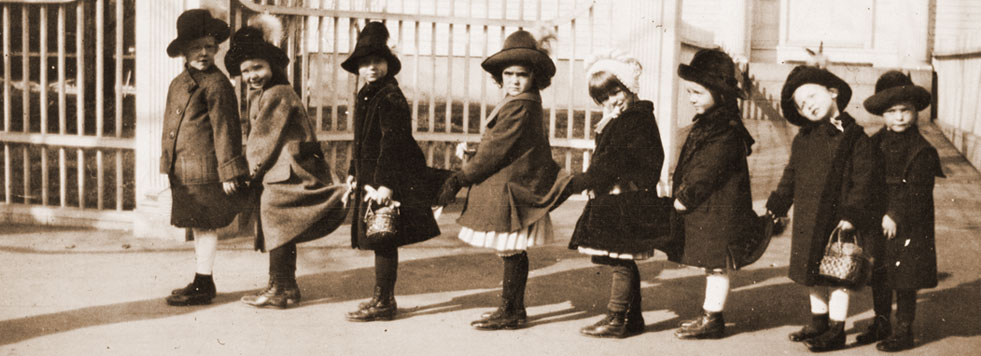
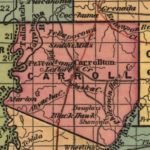
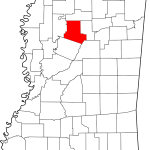
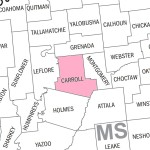
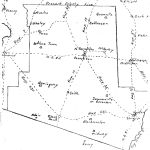
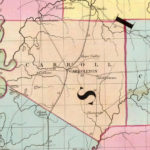
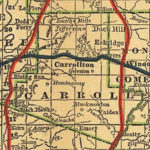
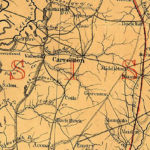
TrackBack URL
https://www.karenfurst.com/blog/carroll-county-mississippi-general-information-and-maps/trackback/